Living Slow In The Eternal City: Notes On Rome
Winter in Rome won our hearts, but here are my recs, no matter the season.
After chasing the Nordic high in Finland this January, we craved the opposite: sunshine on our faces, lazy long mornings in bed, and afternoons that drifted from lunch, to gallery, to wine bar with no real sense of urgency. A soft launch into the New Year.
We found it in Rome, in the quieter cadence of the Eternal City. The art of doing nothing is sometimes what leads you to the best parts of a city. There was a joy in finding calm within the chaos; letting the day unfold slowly, without an agenda and spending time looking for the right places. When in Rome, we did as the Romans do.
What makes this city magic isn’t just the grandeur, or the way you turn a corner and find yourself face-to-face with a 2,000-year-old façade. It’s in the texture: the hum of espresso bars in the morning, the patina of palazzo walls, the messiness of the city in winter when locals reclaim the streets. There’s an old-world glamour to it, the kind you feel while sitting with a coffee and thinking about what was happening in this square centuries before you.
It wasn’t our first time in the city, but somehow this visit unlocked something different, quieter, slower, a little more cinematic. A winter version of Rome that felt strange and beautiful in the best way. Empty piazzas, steam rising from tiny cups of espresso, twinkling Christmas lights still hanging like ghosts of a party that ended last week, and that soft, almost melancholy Italian sunshine.
And so, as tourist season starts to creep back toward the Adriatic, a few people have asked for our favourite finds.
📍In a rush? Here’s the Google Maps Hitlist
To Stay
Rome’s hotel scene has seriously upped its game. The city may be an ancient city, but the hotels have an incredible new lease of life. New boutique charm, old-money elegance, and so many great design hotels now coexist effortlessly with the classic five-star institutions. We kept it low-key for our stay, but here are some favourites:
Hotel Locarno - Infused with history and art has been occupied by Hollywood stars, Italian filmmakers, and artists since 1925. Art Deco and old world goodness.
Hotel Casa Monti - Stylish hideaway with the little yellow Fiat out front. In a lively arts district filled with a lot of fun bars, vintage stores, and jazz clubs.
Nerva Boutique Hotel – Simple, minimalist, and not overly decorated like most Rome hotels - also steps from the Roman Forum.
Soho House Rome – I cringe when people call these out, but the Roman SH is stunning and one to keep an eye out for.


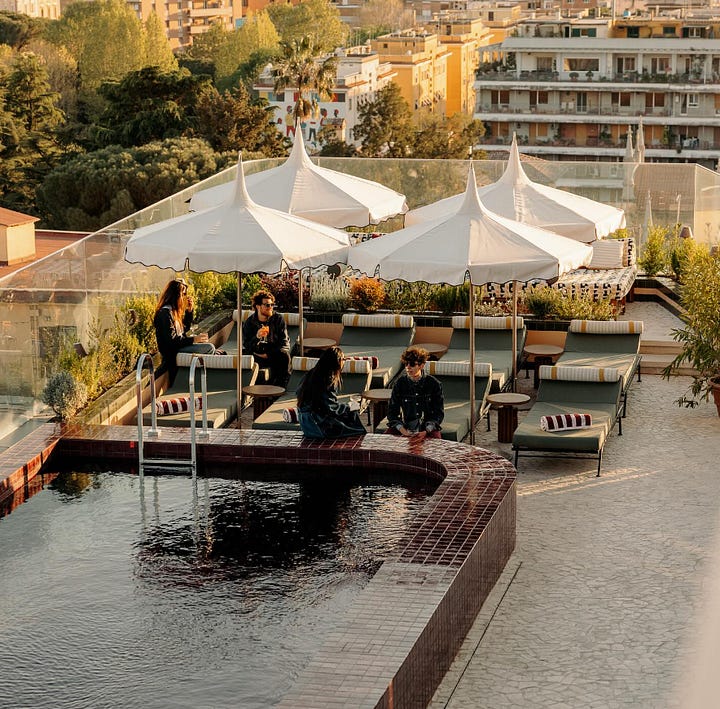

And these are our bucketlust future stays (like, the really special ones)…
Palazzo Talia - Challengers Director Luca Guadagnino’s first hotel, set inside a Baroque Roman palazzo. The design, architecture, and art are unreal and exactly what you’d hope from him. If the room rates feel ambitious, you can still soak up a little of the magic at their patio bar, Bar della Musa. Baroque elegance, beautifully restored.


Hotel d’Inghilterra - A Small Luxury Hotel that has been revamped. It’s been around since 1845; antique charm, balcony suites, a coveted bar scene, and Café Romano’s regional delights.

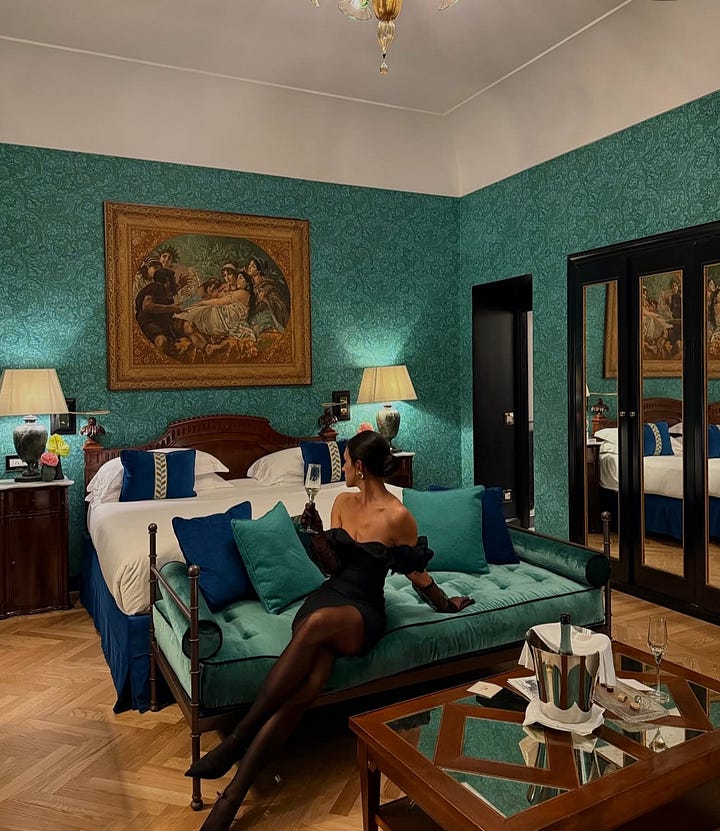
La Posta Vecchia – Refined seaside escape just beyond the city walls. Who knew Roman hotels could be enjoyed on a beachfront?
Eat & Drink
It’s good to know the different types of restaurants in Italy. You’ll see signs that read Trattoria, Ristorante, Osteria, and so on. A primer on Roman dining labels:
Bar = espresso and morning pastry (cornetto, pastries, panini). I loved watching locals stand at the bar for their quick, ritualistic breakfast.
Enoteca = curated wine and snack bars.
Osteria = warm, family-inspired fare.
Trattoria = traditional, often casual, communal tables.
Ristorante = refined, full-service, and more upmarket.
The golden rule: no menus in five languages. If the host is hustling for tourists outside, keep walking. The best Roman meals feel unplanned and slightly worn-in. A Thursday gnocchi special, a bowl of cacio pepe with no flourish, a trattoria that looks closed. I’ve got a long list saved in my notes, but here are some standouts:
Caffè Doria - Romans just get an espresso and a pastry here. Perfect for people-watching.
Hostaria Da Cesare dal 1921 – Century-old spot for timeless traditional Roman cooking.
Felice a Testaccio – Revered local go-to and cacio e pepe perfection.
La Matriciana dal 1870 – An Art Deco time capsule where Amatriciana was born.
Piatto Romano – Local charm just off the centre. Thursday gnocchi, Friday seafood, and an unpretentious, easygoing vibe.
Diandra Ristorante – We really loved our meal here. Family-run, candlelit warmth, and exquisitely fresh pasta - we had carbonara that was smokey & bottargo and white fish pasta.
Piccolo Buco – The wait is worth it. The yellow tomato and anchovy pizza was outrageously good. One of the best pizzas I have had.
Dal Bolognese – An old-school power spot for elegant evenings.
Roma Sparita – Bourdain-approved and still excellent. The cacio e pepe in a cheese bowl is worth the hype.
Rimessa Roscioli – Cooking classes, wine pairings, and genuinely passionate staff. The olive oil and homemade steak tartare were so good.
Matricianella – A reliable Roman trattoria classic.

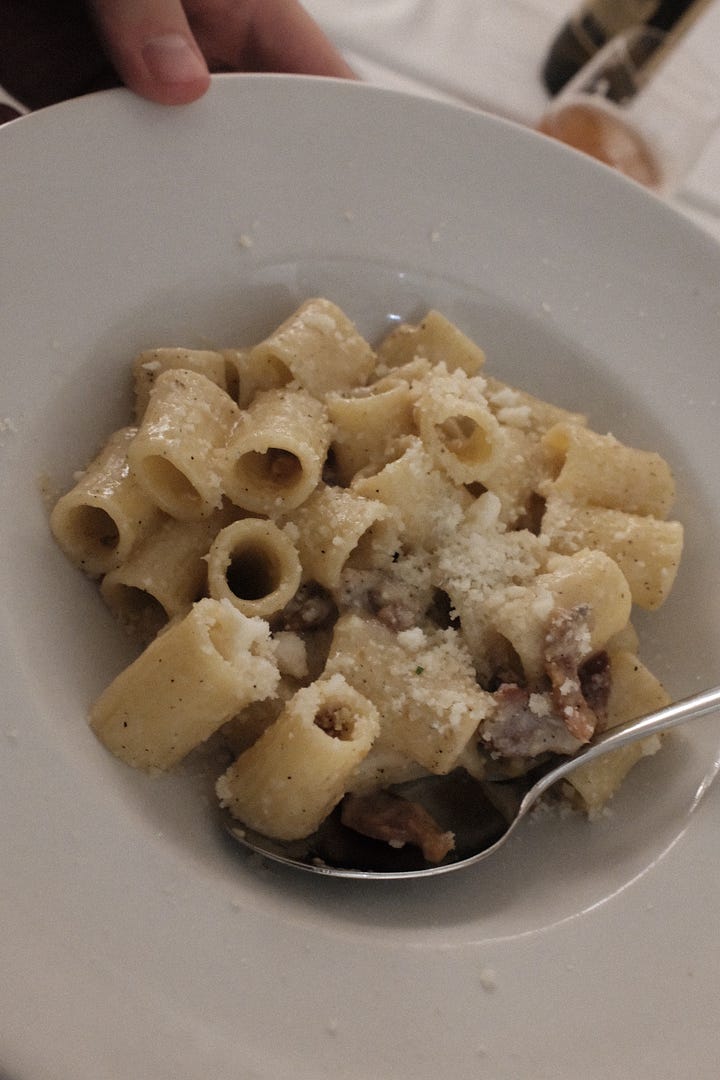
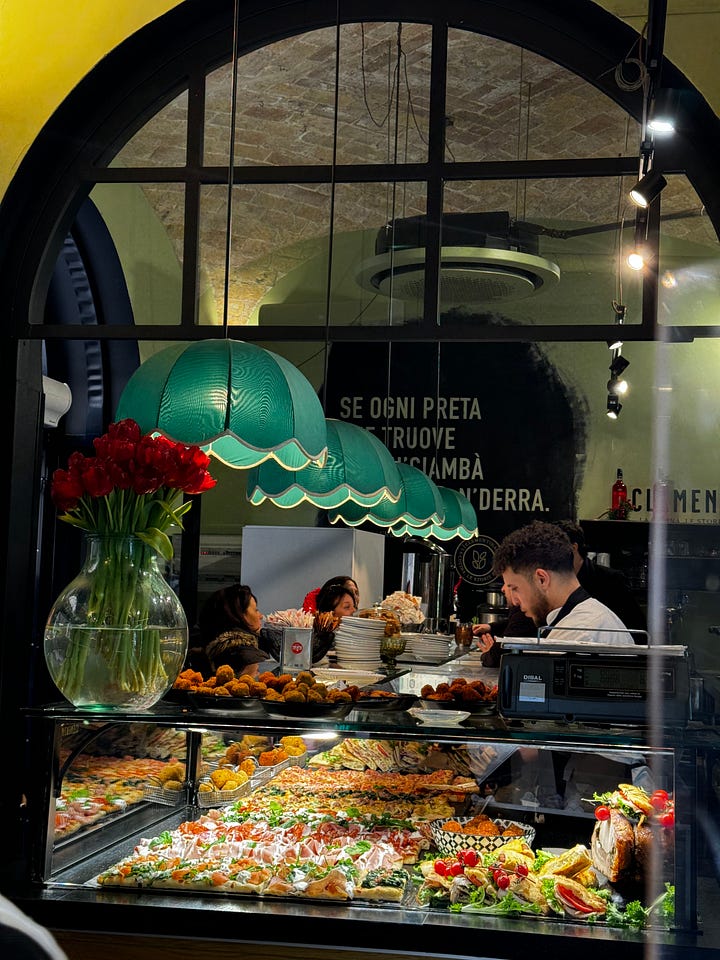
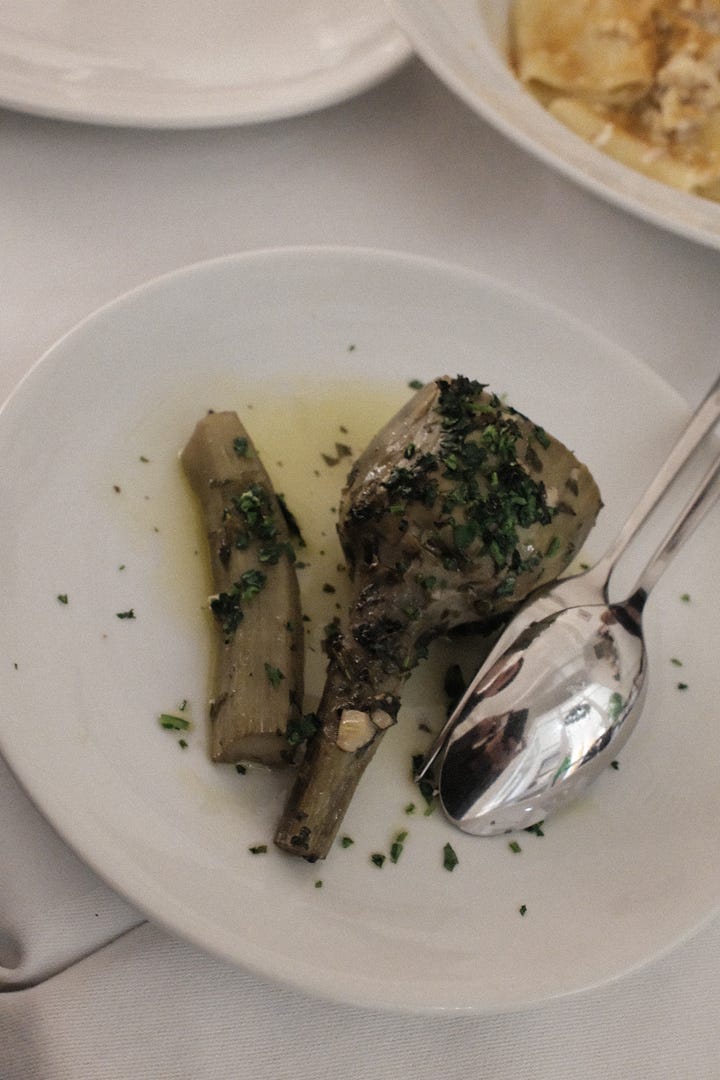
Enoteca Il Piccolo (since 1980) – A tiny local favourite tucked near Piazza Navona. Fair prices and a small outdoor setup in summer.
33 Giri Listening Bar – Cute vinyl bar that feels a little moody. Chic share plates as well.
Sacripante Art Gallery – Set in a deconsecrated convent, this gallery-slash-cocktail bar is as dramatic as it sounds. Go late, stay later.
La Barrique or Il Goccetto – Good global wine list and surrounded by old dusty bottles.
L’Oratorio Trastevere – Drinks beneath the arches of an old church. It's more about the aesthetic than the drinks, but worth it for the atmosphere.
Cielo at Hotel de la Ville – Rooftop views and hotel glamour - I love the red and white stripes.
L’Antidoto – Natural wine. The crowd is stylish, the pours are generous.
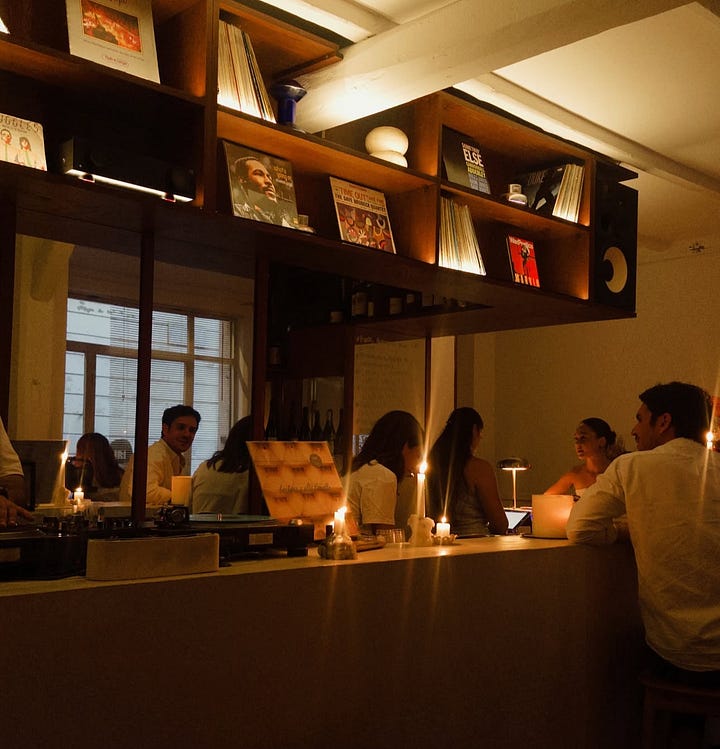
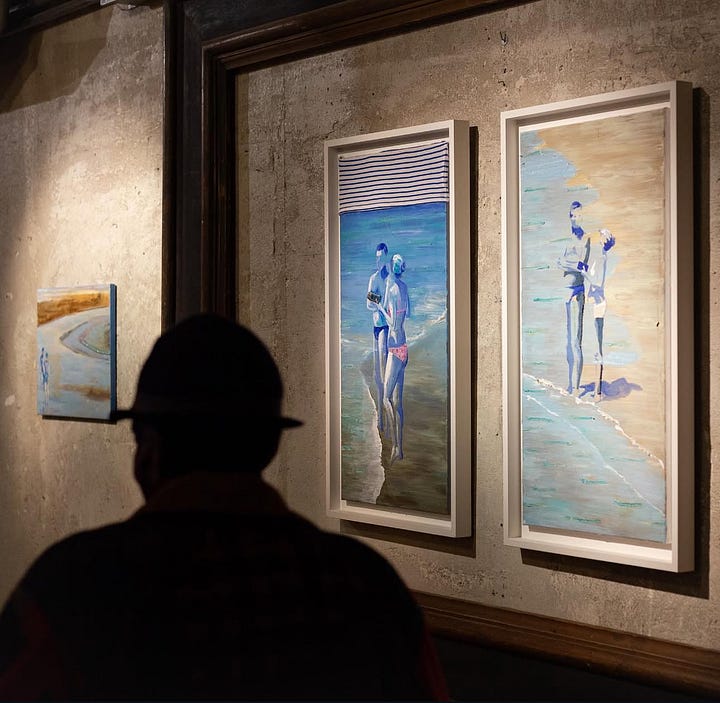

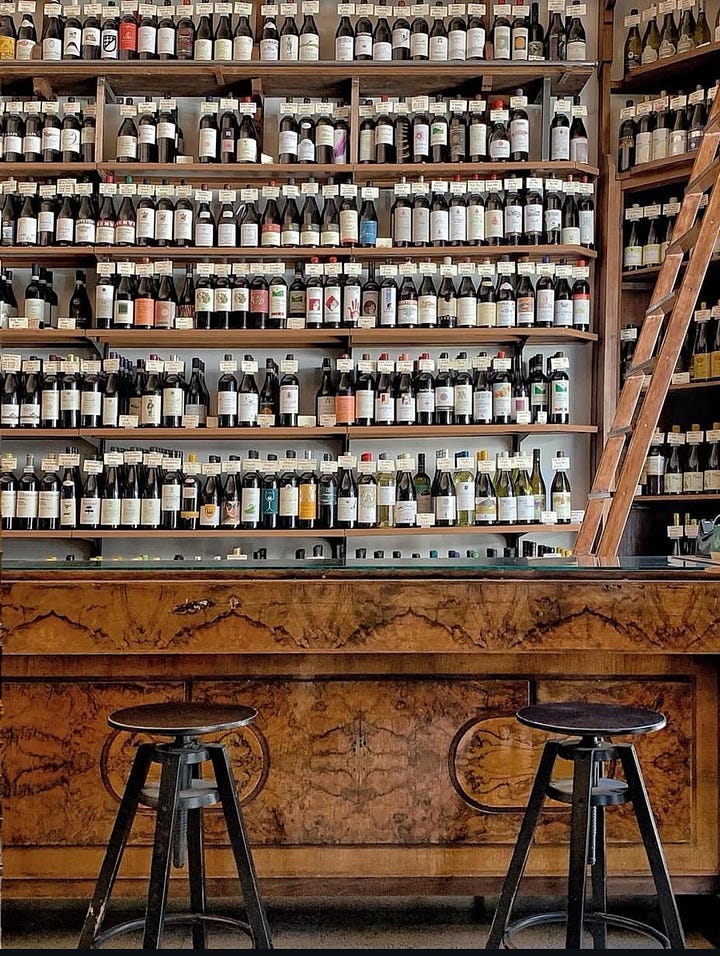
Valentyne Restaurant & Club – Velvet, low lighting, and late hours. For when you're dressed up and don’t want to go home yet. They have caberet which is also fun.
Gregory’s Jazz Club – A tiny venue with big soul. Live jazz upstairs, whisky bar downstairs.
To See
Basilica di Santa Maria in Trastevere – One of Rome’s most beautiful churches.
Villa Borghese - Beautiful sculpture in the greenery. Rent a bike, visit the Galleria Borghese.
MAXXI – Zaha Hadid’s bold, angular modern art museum. A sharp contrast to the city’s ruins.
Testaccio Market – Try, taste, and talk to the stall owners
Antica Farmacia di Santa Maria della Scala – A 16th-century pharmacy that looks straight out of a Wes Anderson film.
Palazzo Altemps – Ancient sculptures inside a Renaissance palazzo.
Antica Libreria Cascianelli – One of the oldest bookstores in the city.
Emporio Centrale – Industrial vibes with curated fashion and design pieces.
Ciao Vintage – A treasure trove of archival finds.
Schostal – The chicest place to buy pyjamas, robes, and linens.
Erboristeria Edicola Romana Non Ordinaria – A concept store tucked inside a vintage newsstand.
The Classics – Colosseum, Pantheon, Trevi Fountain, Spanish Steps, and the Sistine Chapel. Yes, they’re touristy. Yes, they’re still breathtaking. Book night tours where you can so you can enjoy these places after hours (essential in high season). We regretted not doing this.
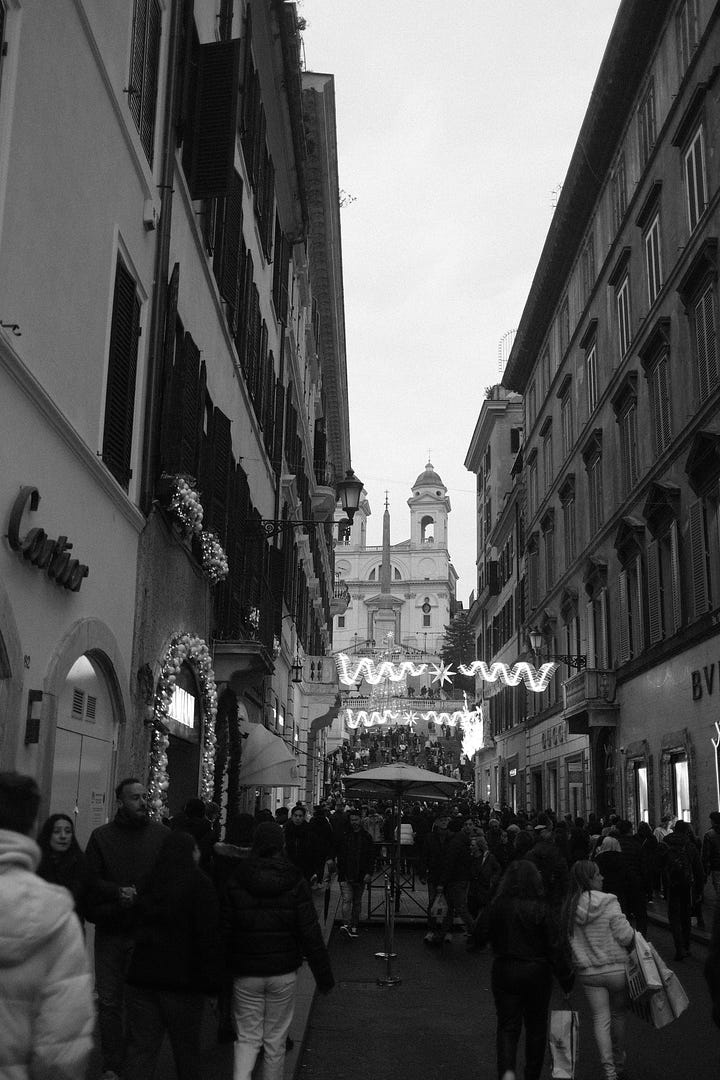

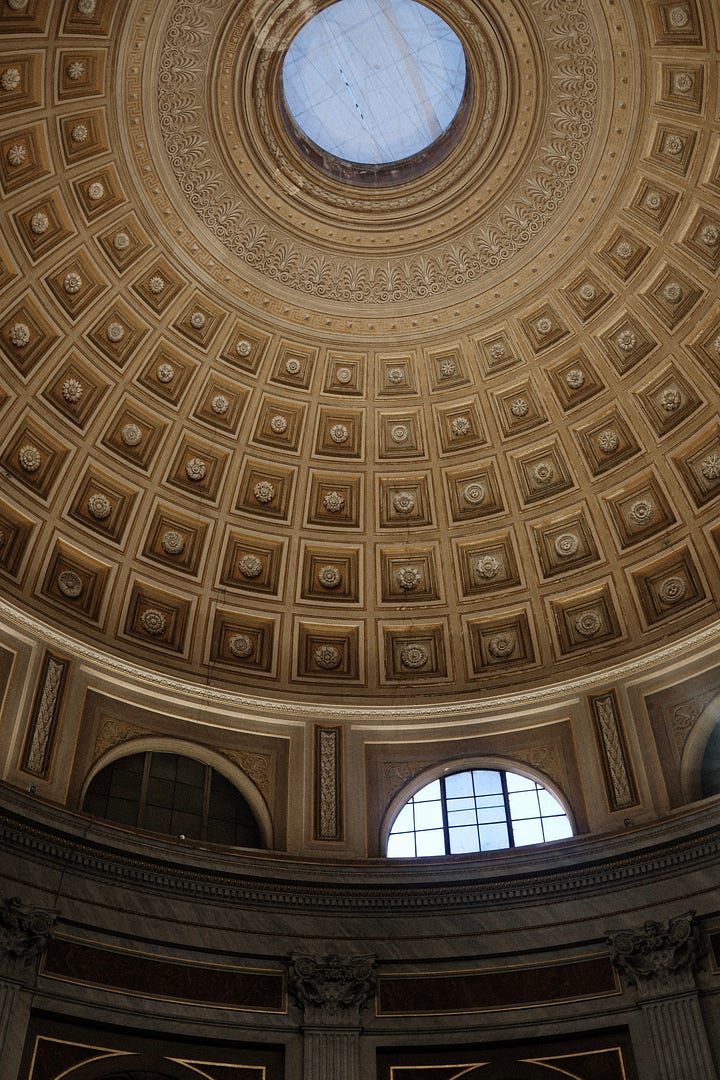

I’ve just started this Notes On series for some of my favourite cities around the world. In case you missed the previous two, see them below…
More to come.


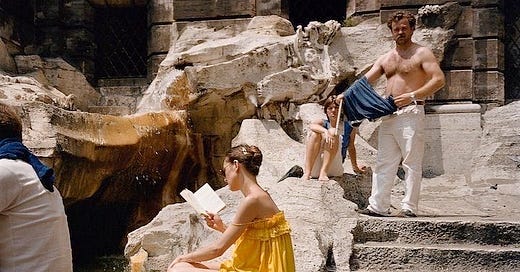



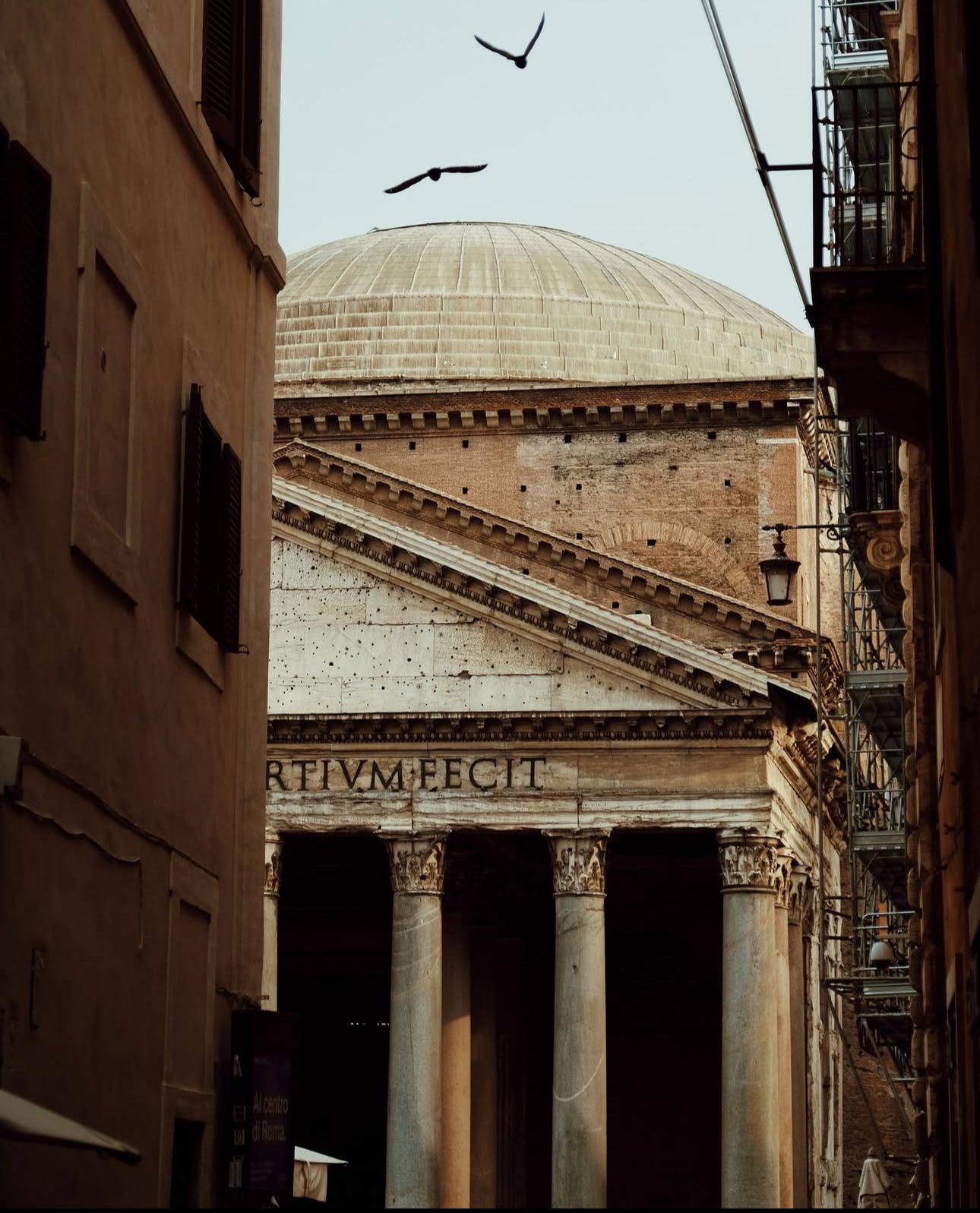


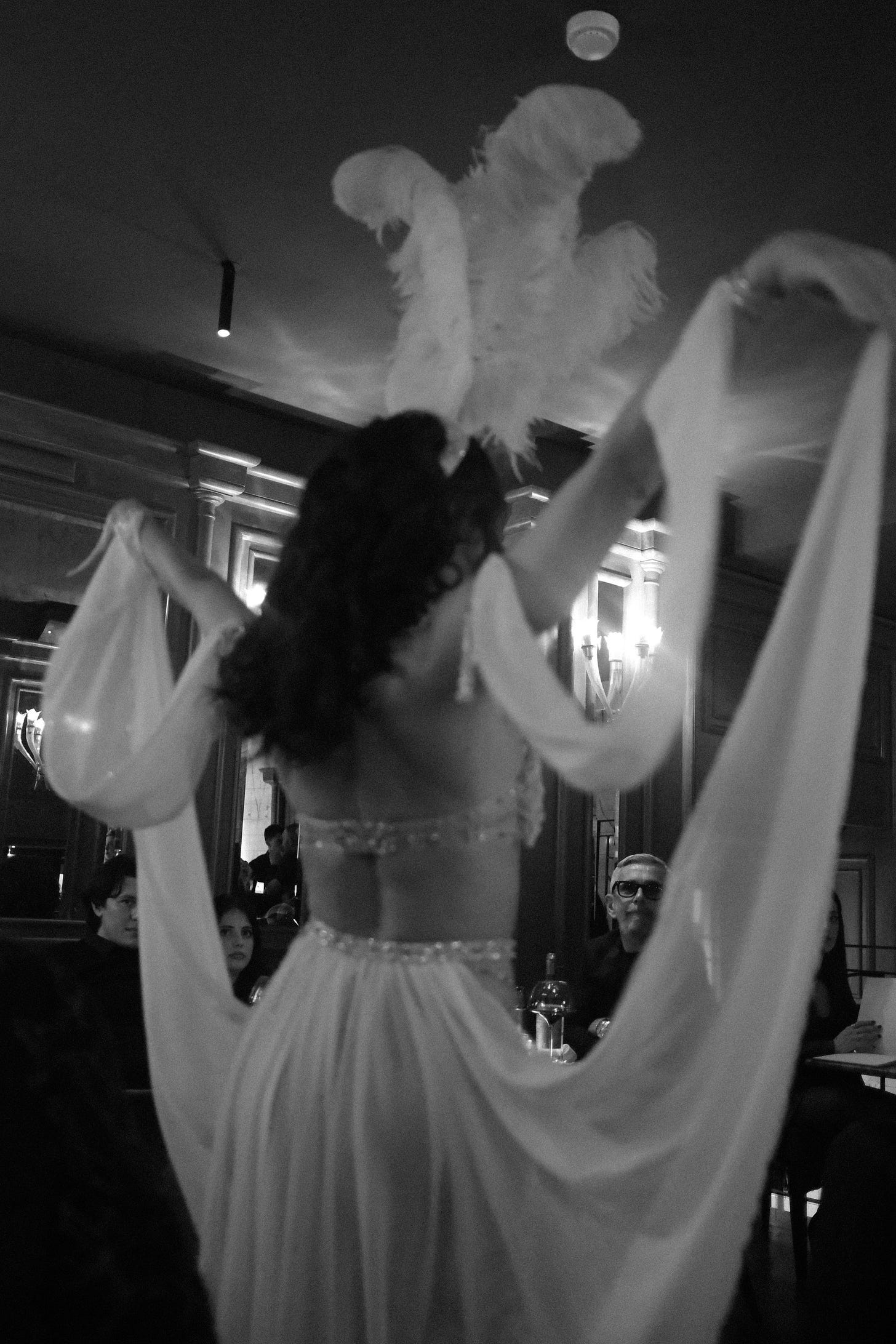
Hotel Locarno has my heart!